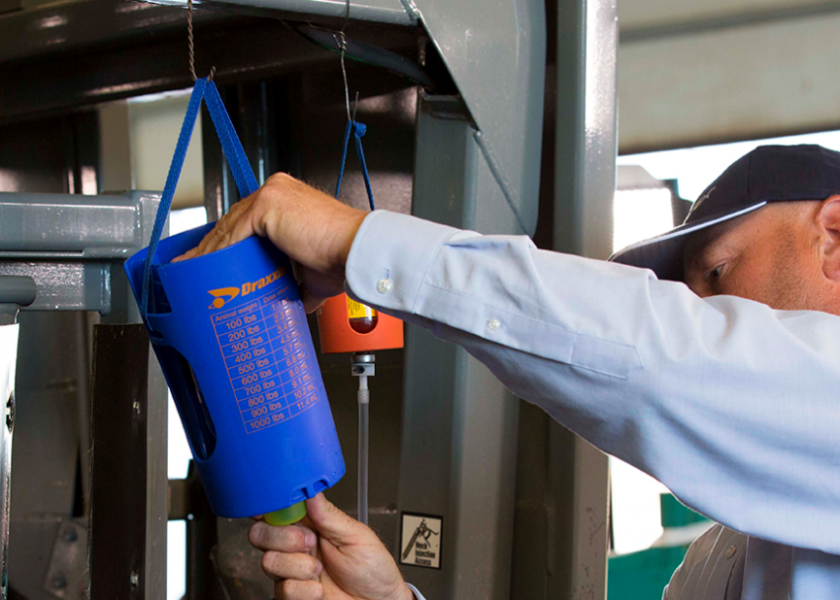Lessons Learned Growing Up on a Stocker and Feedlot Operation

Justin Lake is a lifelong stocker and feedlot operation worker who’s seen the ups and downs of the stocker business. That’s why he’s not shy about sharing advice. He has Three Keys to Stocker Success that are simple, yet important, guidelines for any stocker and he’s willing to share those key points with others.
Justin Lake has dabbled in cattle production his entire life. When he was a little guy, his grandpa would pay him in cattle instead of cash — now, that investment is yielding real returns.
Born and raised on a feedlot and stocker operation near Blackfoot, Idaho, Lake runs yearlings in a stocker program in Jackson Hole and Soda Springs, Wyoming, and he also feeds some of those cattle out. He applies the lessons he learned as a child to manage BRD and overall herd health on his operation.
Setting high-risk calves up right
During his ten years running stockers, Lake has always paid very close attention to the history of the sale barn cattle he buys, and he uses metaphylaxis on his high-risk cattle to control BRD. Specifically, he’s used DRAXXIN® (tulathromycin injection) Injectable Solution for the last few years on his lightweight calves going into hay lots.
“I’ve been there, done that with buying high-risk cattle and not giving DRAXXIN on arrival or a vaccination program,” Lake said. “You only have to save one and you’re ahead.”
Lake buys cattle in the fall and puts them in a grow yard for sale in the spring. He also buys yearlings in the fall for winter hay yards, then turns them out on grass. He typically owns his cattle for about 120 to 150 days.
On calves he buys to turn out on grass, he uses a consistent regimen to get them set up right. The calves typically average 450 to 550 pounds, and in addition to a metaphylactic antibiotic treatment, his cattle going to the grow yard are vaccinated with BOVI-SHIELD GOLD ONE SHOT® and an 8-way clostridial, as well as a dose of DECTOMAX® Injectable and a SYNOVEX® implant. In Lake’s mind, this is an ideal program to manage health issues.
Managing the environment
In Lake’s corner of the world, he often faces environmental challenges like rain, snow, extreme cold or dryness that also necessitate the need for an on-arrival antibiotic. His cattle also can see some long hauls that expose them to BRD.
“I give them DRAXXIN, and the problem is controlled,” Lake said. “It’s incredible the difference it makes.”
Lake works closely with his veterinarian to identify the risks for his cattle. Additionally, he’s made environmental improvements to help control the spread of BRD, including more bedding, smaller pens and adding more water troughs.
Vaccinations matter
In addition to using antibiotics to control BRD, Lake also is a firm believer in the difference a solid vaccination program makes, and he’s seen the results firsthand. In the face of a hard winter last year, he reduced pulls and saved on treatment costs by giving a booster of BOVI-SHIELD GOLD ONE SHOT.
In fact, owning a handful of cows and having the advantage of seeing those calves become stockers has shown Lake the importance of a solid vaccination program to help keep BRD at bay in stockers. He even encourages the sources he buys from to vaccinate.
“The cattle that have been preconditioned are always better health-wise and have less risk at the feedlot,” Lake said. “Herd health is a ‘10’ on importance for me. You can’t afford death loss or even chronics. These days, you can’t afford to not have a top-notch health program.”
IMPORTANT SAFETY INFORMATION: DRAXXIN has a pre-slaughter withdrawal time of 18 days in cattle. Do not use in female dairy cattle 20 months of age or older. Do not use in animals known to be hypersensitive to the product. See full Prescribing Information: Here
IMPORTANT SAFETY INFORMATION: DECTOMAX Injectable has a 35-day pre-slaughter withdrawal period. Do not use in dairy cows 20 months of age or older. Do not use in calves to be processed for veal. DECTOMAX has been developed specifically for cattle and swine. Use in dogs may result in fatalities.
Do not use SYNOVEX products in veal calves. Refer to label for complete directions for use, precautions, and warnings.
All trademarks are the property of Zoetis Services LLC or a related company or a licensor unless otherwise noted.
© 2021 Zoetis Services LLC. All rights reserved. DRX-00292
Sponsored by Zoetis







